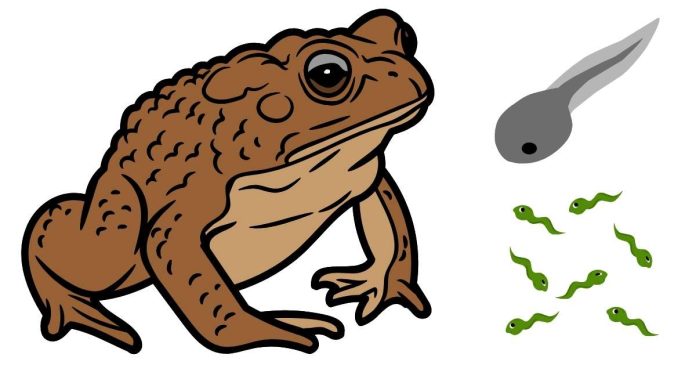The young one of a toad is called a tadpole. Like frogs, toads belong to the order Anura and undergo a fascinating process of transformation called metamorphosis, where they transition from aquatic, gilled larvae into fully developed, land-dwelling toads.
Life Cycle of a Toad
To understand what a young toad is and how it develops, it’s helpful to look at its life cycle, which consists of several distinct stages:
- Egg Stage:
Female toads lay eggs in water, often in long strands that float or attach to plants. These eggs are fertilized externally by the male. - Tadpole Stage:
After hatching, the young toad begins its life as a tadpole. Tadpoles:- Have gills for breathing underwater.
- Lack limbs initially and have tails for swimming.
- Feed on algae and other plant matter in their aquatic environment.
- Transformation (Metamorphosis):
As the tadpole grows, it undergoes significant changes:- Hind legs and front legs develop.
- Gills are replaced with lungs, allowing the toad to breathe air.
- The tail shrinks and eventually disappears.
- Adult Toad:
Once the transformation is complete, the young toad, now fully developed, leaves the water to live on land, where it feeds on insects and other small invertebrates.
Differences Between Toad Tadpoles and Frog Tadpoles
Toads and frogs share similar life cycles, but there are subtle differences in their tadpoles:
- Toad tadpoles are often darker in color, which helps camouflage them in murky water.
- Frog tadpoles tend to be more active swimmers and have sleeker bodies.
The young of a toad is called a tadpole, a fascinating larval stage in its life cycle. Tadpoles are aquatic creatures that undergo dramatic changes during metamorphosis to become adult toads. This process is a testament to the adaptability and complexity of amphibians in their dual life stages on land and in water.


